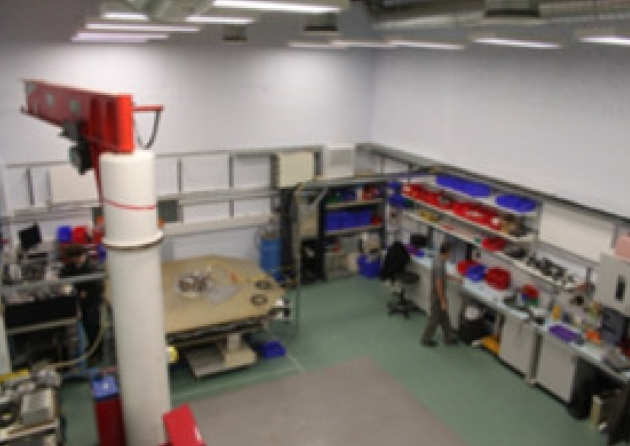MACH and Extreme Physics research: Convergent shock waves, high speed flyers and New X-ray sources
 This part of the plasma physics group is dedicated to creating and analysing matter at high density, temperature and pressure. These extreme states are achieved in a variety of ways, typically through the application of very high electrical currents in 100s of nanoseconds– ‘pulsed power’. Pulsed power driven magnetic fields are used to directly pressure materials, studying their strength at high pressures; these magnetic fields are also used to launch solid flyer plates to many kms-1 impacting them with targets for shock physics and fusion applications. High currents can be used to directly explode fine metallic wires in liquid media – resulting in the formation of very high pressure shock waves, that can then be focussed to create multi-Mbar warm, dense material. Finally, the use of 2 of more crossed wires in vacuum – an ‘X-pinch’ - can create ultra-high pressures, densities and temperatures as the cross over point implodes. The compression also results in a <ns duration, bright burst of X-ray radiation suitable for phase contrast imaging, X-ray diffraction and absorption spectrometry.
This part of the plasma physics group is dedicated to creating and analysing matter at high density, temperature and pressure. These extreme states are achieved in a variety of ways, typically through the application of very high electrical currents in 100s of nanoseconds– ‘pulsed power’. Pulsed power driven magnetic fields are used to directly pressure materials, studying their strength at high pressures; these magnetic fields are also used to launch solid flyer plates to many kms-1 impacting them with targets for shock physics and fusion applications. High currents can be used to directly explode fine metallic wires in liquid media – resulting in the formation of very high pressure shock waves, that can then be focussed to create multi-Mbar warm, dense material. Finally, the use of 2 of more crossed wires in vacuum – an ‘X-pinch’ - can create ultra-high pressures, densities and temperatures as the cross over point implodes. The compression also results in a <ns duration, bright burst of X-ray radiation suitable for phase contrast imaging, X-ray diffraction and absorption spectrometry.
This research occurs in the recently built extreme physics laboratory, in the basement of Blackett. Here we have our own cutting edge pulsed power facility called MACH – the Mega Ampere Compression and Hydrodynamics generator. This compact, semi portable system produces up to 2MA, in ~400ns. Developed alongside MACH are several leading diagnostics systems – including a multi-channel photon doppler velocimetry system and laser backlit high speed imaging system. X-pinch experiments occur on 3 different generators – Nene (50kA, 50ns); Big sister (100kA, 70ns) and the newly developed ultra portable dry pinch (140kA, 240ns)